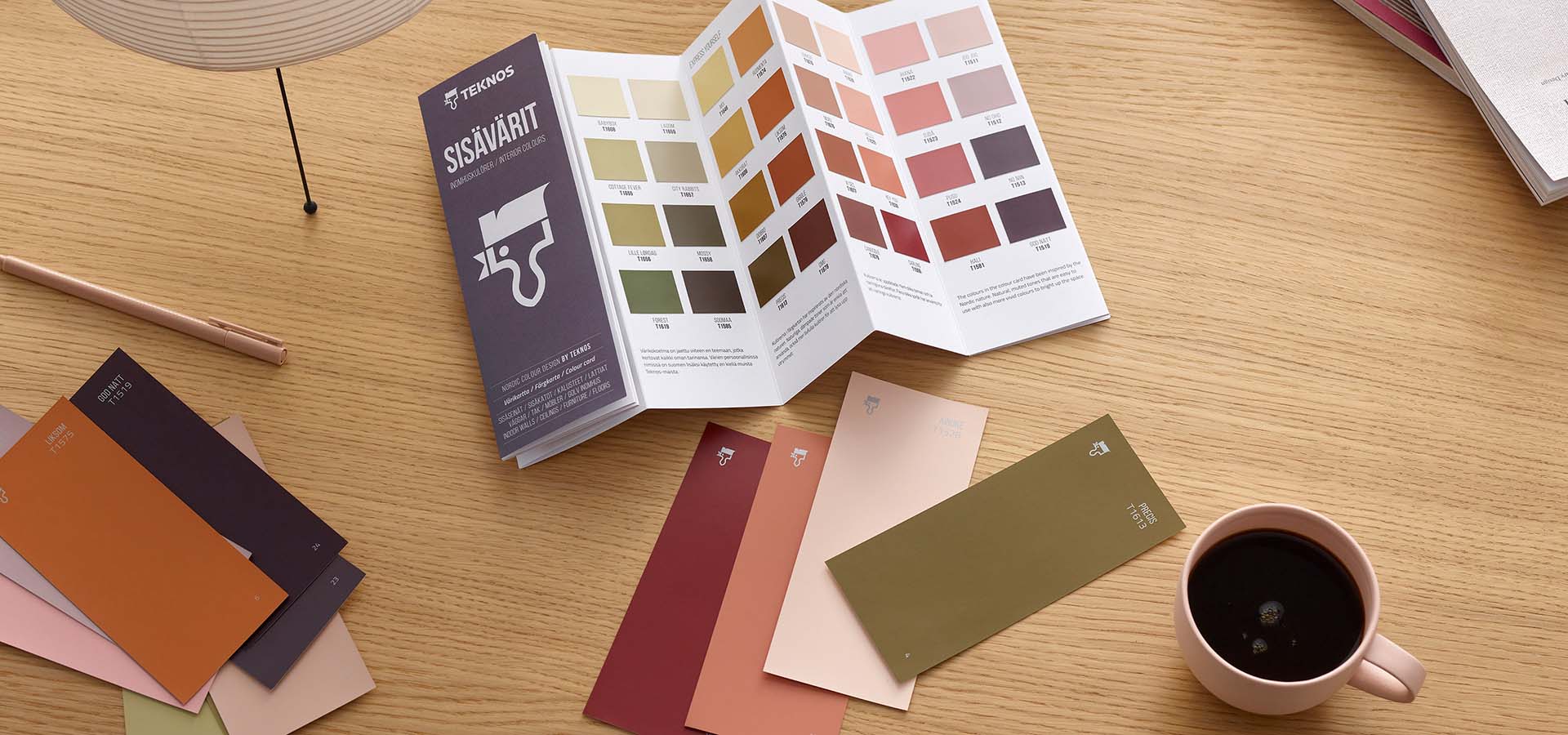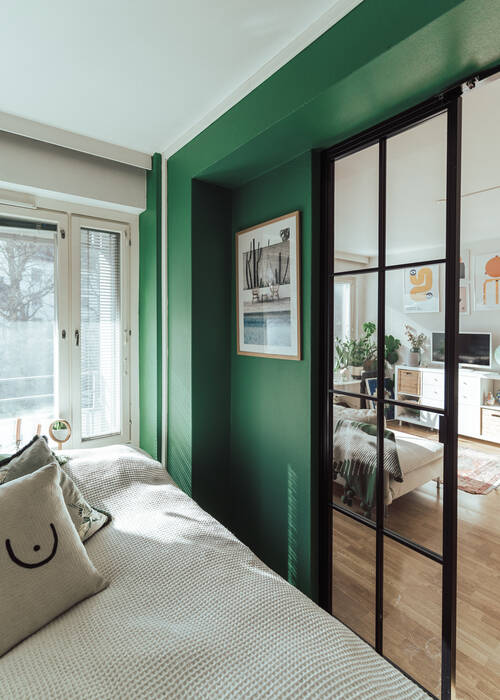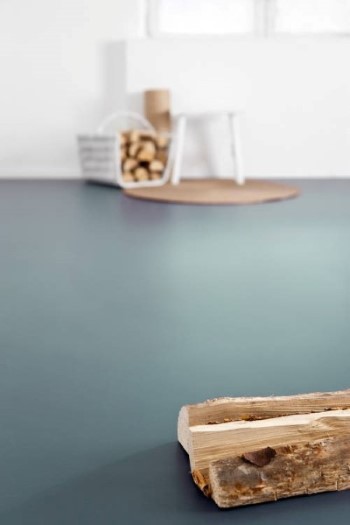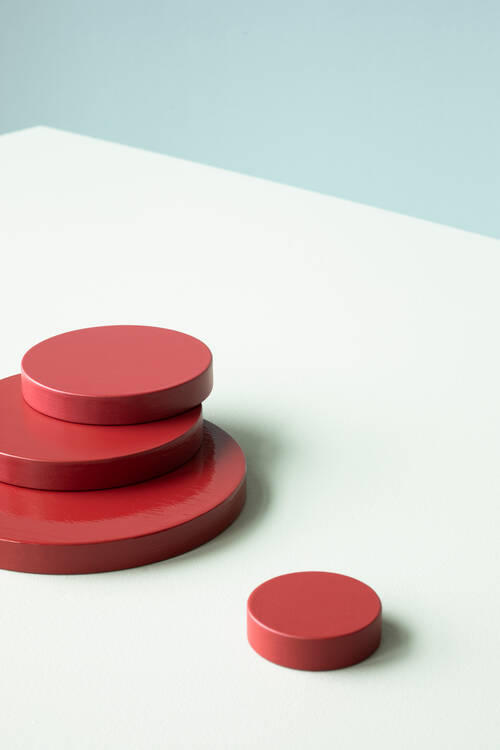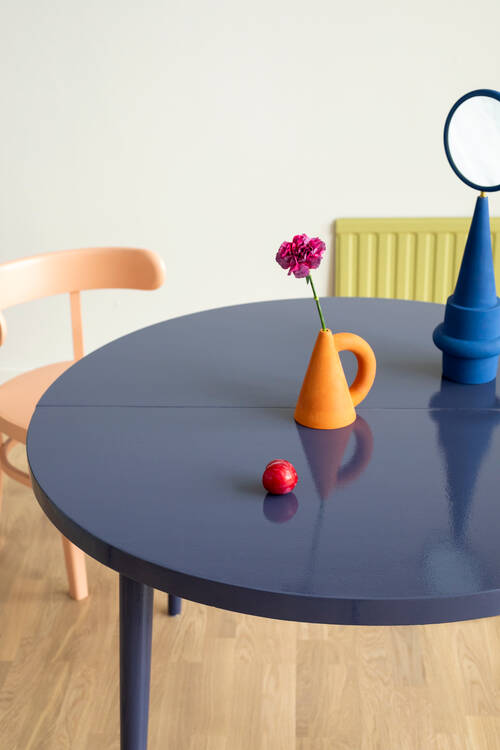1. THINK ABOUT THE ATMOSPHERE YOU WANT TO CREATE IN YOUR HOME
It’s easy to transform the mood of a space using different wall colours. When planning your home’s interior and colour scheme, start by considering the kind of atmosphere you’d like to achieve. Also think about the room’s purpose — do you want a calming space to unwind after a long day, or perhaps a cozy and colourful overall feel?
WARM OR COOL, LIGHT OR DARK, PURE OR MUTED?
People see and experience colours differently. In general, interior colours can be grouped into neutral, warm, and cool tones. Neutral colours include whites, greys, blacks, browns, and beiges. Warm colours include yellows, oranges, purples, and reds. Cool colours are typically blues, turquoises, and greens. However, there’s also a gradient from warm to cool within each colour group. For example, mint green tends to feel cooler than forest green.
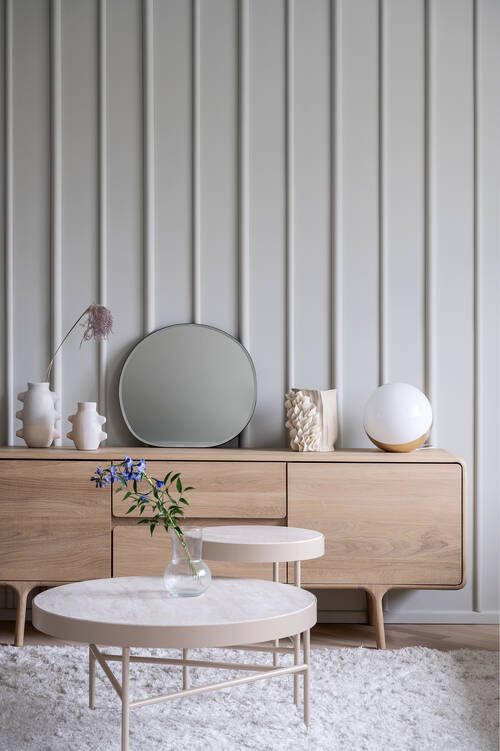
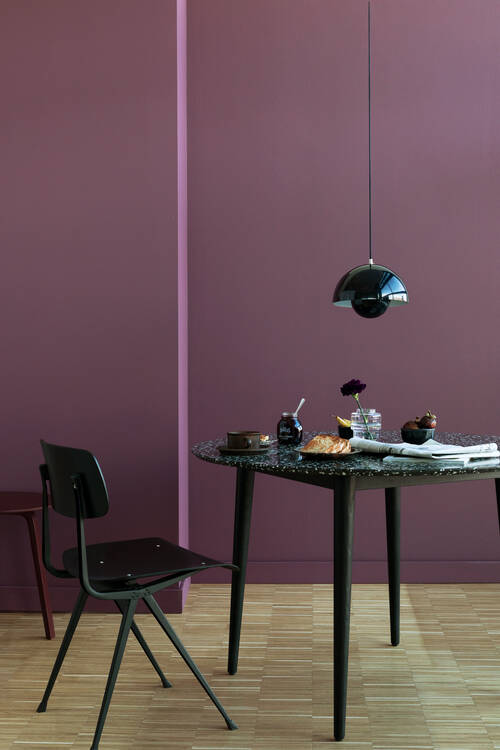
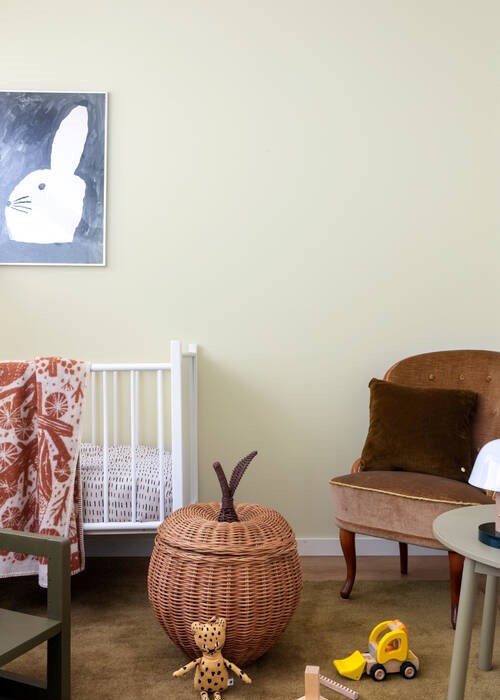
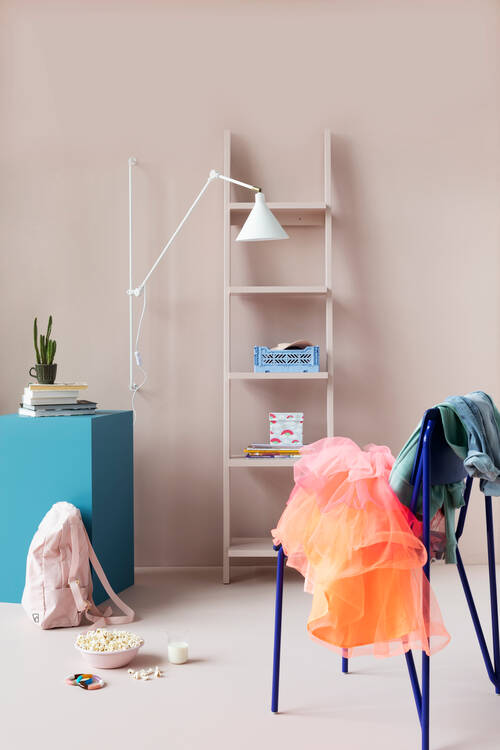
Image 1: Wall colour T7009, full-matt BIORA® BALANCE interior paint, trims painted with FUTURA® AQUA 5 furniture paint. Photographer: Pavel Kasinski | Image 2: Wall colour LONDON CALLING T1515, full-matt BIORA® BALANCE interior paint | Image 3: Wall colour BABY BOX T1608, full-matt BIORA® BALANCE interior paint | Image 4: Wall colour JOO JOO T1511, BIORA® BALANCE interior paint, shelf in JOO JOO T1511, cube in MOSCOW MUSE T1442, painted with FUTURA® AQUA 20 furniture paint.
A GOOD BASIC TIP: THINK ABOUT WHETHER YOU WANT A WARM OR COOL ATMOSPHERE, AND A DARKER OR LIGHTER OVERALL LOOK
When choosing shades, a helpful starting point is to consider whether you want the space to feel cooler or warmer, and whether you prefer a darker or lighter overall impression. Also think about how the mood changes if you choose a more muted tone instead of a purer one — it can make a surprisingly big difference.
WALL COLOUR HAS A BIG IMPACT ON THE ATMOSPHERE OF YOUR HOME
As a large surface area, wall colour significantly influences the overall feel of your home. A safe choice for wall colours is often a lighter or mid-tone muted shade. Brighter, purer tones can be confidently used in other elements of the interior.
Here are a few general guidelines to help with choosing wall colours:
- Cool tones, very light shades, and white make a space feel more open and increase brightness.
- Earthy, muted tones create a grounded and calming atmosphere. These are often used in living areas. Explore the Nordic Phenomena colour collection for inspiration.
- Warm wall colours help make a space feel cosier and more inviting. You’ll find these in the Cozy Weekend and Colours without Borders colours.
- Cool, light shades are ideal for making small spaces feel larger. See the Cool Living colour collection.
- Darker tones highlight a personal style and add a sense of intimacy and atmosphere.
- Strong, saturated colours are experienced as energetic and dynamic. They’re best suited to spaces where relaxation isn’t the main goal, such as hallways. The Express Yourself collection includes spicy, muted tones that work well even on large surfaces.
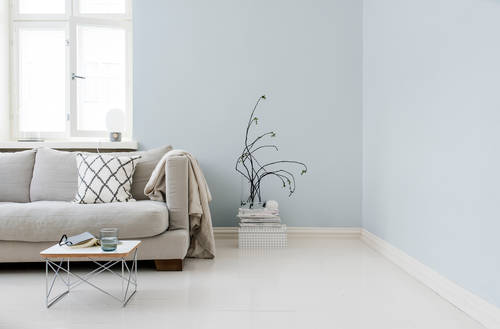
Image: Colour T1200, full-matt BIORA® BALANCE interior paint. Photographer: Sami Tirkkonen.
Tip! The colour scheme of a child’s room can be quite different from the rest of the home’s interior. If the child gets to choose the colour themselves, it’s a good idea to select a slightly lighter and more muted shade from the colour card. Children often prefer very saturated and bold colours, which can appear overly bright or harsh when used on large surfaces.
